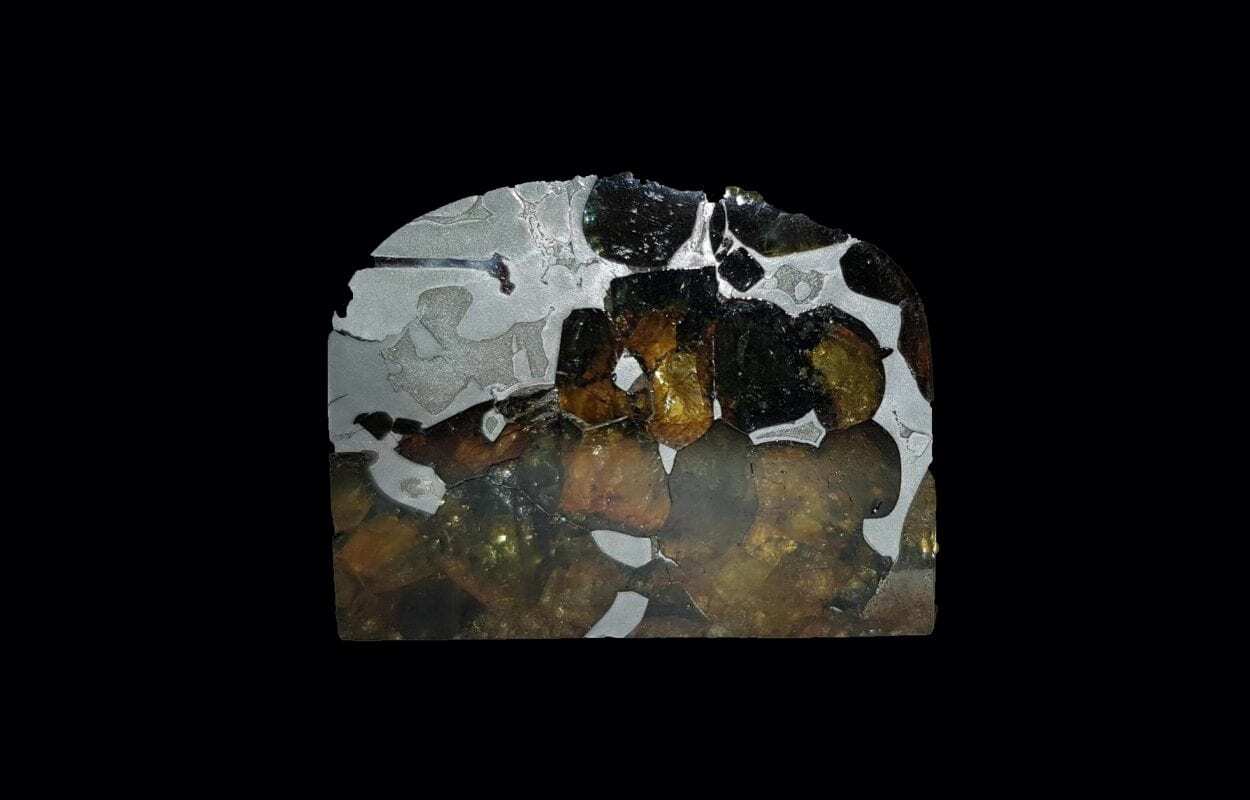Pallasites are stony-iron meteorites, and are known for their unusual, visually attractive structures. However, to date, their origins have been hotly disputed.
Researchers at the Bavarian Research Institute of Experimental Geochemistry & Geophysics (BGI) of the University of Bayreuth have now succeeded in simulating the formation of all known types of pallasites by means of high-pressure experiments, and in placing them in the history of the solar system. They have been working closely with scientists from the Technical University of Munich and the Royal Holloway University of London. The new findings are presented in the journal “Earth and Planetary Science Letters”.
As the researchers have now discovered, pallasites arose from asteroid collisions that occurred approximately 4.5 billion years ago. In these collisions, iron from the smaller asteroid mixed with the olivine-rich material in the mantle of the larger asteroid. Billions of years later, quantities of this material mixture were blasted out of the surface of the asteroid by the force of another impact, and catapulted into space. Some of them finally hit the Earth. This genesis explains the unusual structures found in pallasites: They contain greenish brown olivine crystals surrounded by nickel and iron metal.
In research, the spatial arrangement of different materials in a rock and the resulting structures make up what is called texture. The pallasites that have been found and studied on Earth so far show a very large variety of textures. “With our research work, we were able for the first time to reproduce in the laboratory all of the textures observed in pallasites.
This shows in an exemplary way how these meteorites can provide us revealing and unexpected insights into the early history of our solar system. To this end, we wish to continue our structural and chemical investigations of pallasite meteorites at BGI – especially in the geochemical laboratories soon to be established here”, says Prof. Dr. Audrey Bouvier, Professor of Experimental Planetology at the University of Bayreuth.
The new findings are the result of experiments on two extremely powerful devices: the MAVO high-pressure press at the Bavarian Research Institute of Experimental Geochemistry & Geophysics, and the identical SAPHiR high-pressure press. This is currently being set up with the assistance of Prof. Dr. Hans Keppler from BGI at Forschungs-Neutronenquelle Heinz Maier-Leibnitz (Research Neutron Source Heinz Maier-Leibnitz) at the Technical University of Munich.
“With these instruments we can simulate very realistically the processes that led to the formation of meteorites, asteroids, or the planets. In order to be able to explain the formation of pallasites by asteroid collisions, we imitated the pressure and temperature conditions prevailing during these processes. Thus, we subjected samples containing iron and olivine to a pressure of one gigapascal (GPa) at 1,300 degrees Celsius. We then compared the changes in shape and internal stresses that we observed in the experimental samples with the textures found in the pallasite meteorites,” explains Danielle Silva Souza, a Master’s student from Bayreuth. After her bachelor’s degree in geosciences at the Federal University of Ouro Preto in Brazil, she came to Upper Franconia to work on experimental geoscience projects, which included the geochemical and experimental research project on pallasites. “BGI offers excellent conditions for this research work,” says the up-and-coming Bayreuth researcher.
Header Image – Texture of a pallasite: The brown and golden-brown areas contain olivines which are embedded in iron-nickel metal. Width: 3.5 cm. Image Credit : Audrey Bouvier





